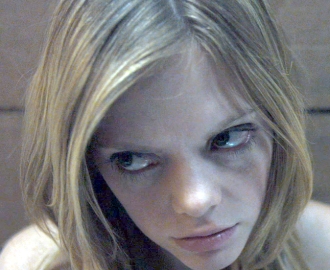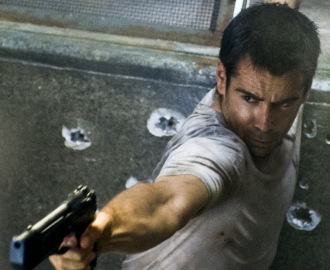'ParaNorman' Will Scare Kids, and That's Good
The children's horror genre draws controversy, but fear makes up a big part of entertainment for young people—and when done right, can be empowering.
![[optional image description]](https://cdn.theatlantic.com/media/mt/culture_test/ParaNorman_Still1.jpg)
ParaNorman, the stop-motion animated children's film that hits theaters today, opens on a screaming woman who steps on a human brain as she runs away from a groaning, shambling zombie. This, it turns out, is a movie within the movie, as Norman—our adolescent horror-aficionado protagonist—watches a horror film with wide-eyed attention. But this opening scene is also ParaNorman's statement of purpose: Despite the squeamishness of parents, horror can and often does play a vital role in kids' lives.
ParaNorman features ghosts, witches, and zombies, which are generally far more likely these days to be found in R-rated splatterfests (a fact that the movie proudly acknowledges with winking references to both Halloween and Friday the 13th). As a result, the film has faced the same marketing challenges that plagued other children's horror films like The Nightmare Before Christmas, Corpse Bride, Monster House, and Coraline. In a recent interview with the Chicago Tribune, ParaNorman co-director Sam Fell acknowledged that the film has to overcome "that age-old battle of parents worrying for their children and trying to build bubbles around them."
MORE ON FILM
It's a battle that I suspect many parents can relate to. I know mine can. As a child, I spent plenty of time walking nervously down the horror aisle at my local video store, feeling an attraction/repulsion to the weird, lurid covers of "terrifying" movies like Creepshow and Killer Klowns From Outer Space. I've found that virtually everyone can point to one specific movie that terrified them when they were young—and describe the degree to which it affected them more than almost any other movie they've seen. (Mine was a particularly misguided preteen viewing of The Shining, but an informal poll of my friends and family revealed everything from conventional horror films like The Birds and It to more offbeat selections like The Wizard of Oz and E.T.: The Extraterrestrial; feel free to share yours in the comments below.)
It's a testament to the enormous power—and potential danger—of the horror genre that I can still remember exactly what it felt like to eject The Shining from the VCR out of sheer terror. More than 15 years later, it remains one of the most powerful cinematic experiences I've ever had. Horror is an enormously subjective genre—one person's spiders is another person's poltergeists is another person's clowns. But whatever form it takes, one truth remains the same: Horror has a particular power over children, who haven't had time to develop the psychic defenses that allow most adults to distance themselves comfortably from the action on-screen. When children are involved, horror needs to be treated as carefully, like a volatile chemical; the right amount can be enormously powerful, but too much can be scarring.
Given the potency of the genre, it's no surprise that the past few decades have shown significant growth in the "children's horror" genre, which has seen numerous attempts to get the scariness balance for children just right. It's also no surprise that this has brought controversy. According to the American Library Association, the most frequently challenged books from 1990-1999 were the three installments of Alvin Schwartz's luridly illustrated Scary Stories to Tell in the Dark, which I remember reading under the covers late at night with a potent mixture of terror and glee. R.L. Stine's Goosebumps series, which remains the second highest-selling children's series of all time, were the 15th most frequently challenged books of the '90s, drawing attacks that went as far as saying the books came "from the devil."
The Goosebumps series—and other books, films, and TV series like it—have taken the brunt of children's horror criticism for two reasons: They're enormously popular, and they're upfront about their genre. Similar concerns have extended to many children's horror films, from The Nightmare Before Christmas (which Disney released under its Touchstone brand, amid fears that it was "too dark and too scary" to be associated with the company's other animated films) to Coraline (which earned enthusiastic reviews—but reviews that almost universally cautioned parents against bringing squeamish children). These concerns are understandable (and sometimes even justified), but they also fail to acknowledge a basic truth: Horror occupies a far larger place on the children's entertainment spectrum than many parents realize—it's just disguised well. There's a reason that many classic Disney films, including Bambi and The Lion King, feature the death of a parent. To a child, what could possibly be more frightening?
Horror is often thought to have a kind of cathartic effect: Having vicariously experienced a fear, the viewer can safely expel it. Children's horror is no different. But the best explanation of how horror can be not just cathartic but instructive for children came from Monster House writer Dan Harmon, who wrote a letter to a little girl who'd been "plagued by nightmares for at least a week" after viewing the film:
"I think a good story, even if it is sad or scary while you're watching it, should always make you a little less scared after you've seen it. Because even a scary story, if it's a good scary story, takes us into strange, dark places that don't make sense at first, and helps us see that they do make sense, and are therefore not so scary. [...]There should always be something inside a monster that helps you understand it, and makes you less scared of it, and able to make the monster go away. Not just a bunch of stuff that makes you more confused and scared."
It's a testament to the creative minds behind ParaNorman that the film fits Harmon's description of a "good scary story" perfectly. Children may be scared at the beginning of ParaNorman, but there's nothing left to fear by the film's end. "There's nothing wrong with being scared, so long as you don't let it change who you are," says Norman's ghostly grandmother in one of the film's most pivotal scene. It's a moral that even the most protective parents can (and should) embrace, and a moral that the best of children's horror always carries.


